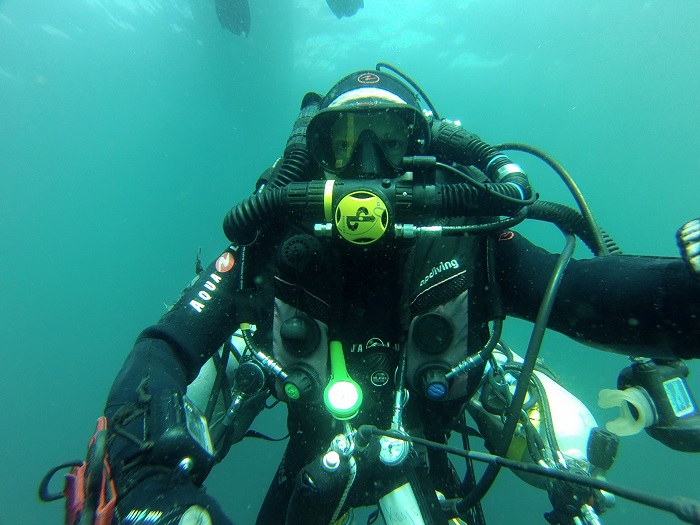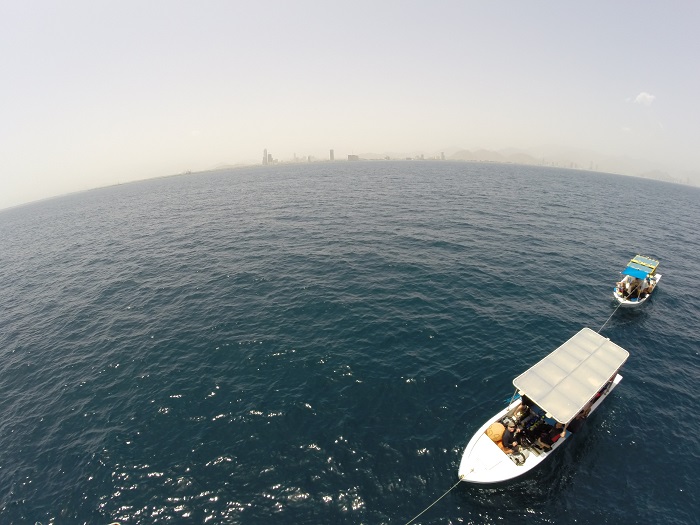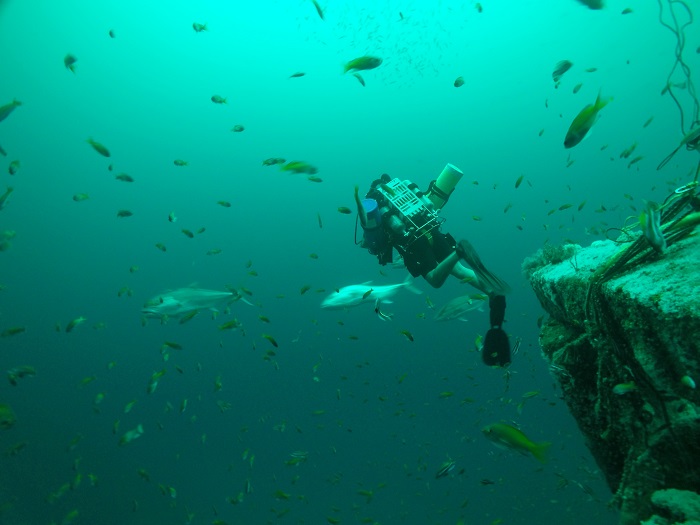Dubai based technical diver Angus Carlisle talks about his rebreather – his essential item of choice for deep underwater diving in the UAE.
We have been together now for nearly four happy years. In spite of that, and unlike some other divers, mine does not have a pet name – “it” will have to do.
Every time I go underwater, “it” comes with me, hours and hours we spend together, some many dives completed have lasted four hours, squeezing through and around the shipwrecks in the Arabian Gulf and Arabian Sea, followed by long hours on the decompression line in clear blue water.

Together we have visited wrecks, reefs, islands and vast underwater sandy plains (for training exercises). We have been to 115 metres below the surface, we have dived in cold winter water (17 degrees C! – so cold by our standards) and hot summer water (a sweaty 36 degrees C). We have dived in the dark and murk and also in the bright blue Middle Eastern waters. Most of this we have put on video (this being another extraordinary development in recent years – my first underwater video camera was the size of a fridge in comparison to today’s equipment.)
Underwater, my rebreather has never failed me – we have had extensive training and skill practices together and carry backup systems, just in case. On the surface we spend many hours in my diving locker at home cleaning, servicing and generally just getting ready for our next trip.

Remarkably, every time we dive, “it” saves me money; by ”rebreathing” the exhaled air, the expensive helium we use for dives below 40 metres is recycled around a loop and back into our lungs – repeatedly. It saves a fortune in gas costs, my open circuit diving friends will spend 1500 AED in excess on gas for a single 100m+ dive – me? 35 AED, possibly 40 – the cost of an ice cream! My rebreather is of the ECCR (Electronic Closed Circuit Rebreather) type and as I breathe, the gas is monitored and a computer decides how much oxygen to squirt into the loop to keep my body functioning well.
All in all, it is a most amazing piece of equipment and in my view is changing the way we all spend our time underwater. While all the hoses make it look extremely complicated you don’t do much more than put it on, do your checks and go diving. If something goes wrong underwater, well that’s a different story and explains the many hours of training required before you use one of these machines yourselves.
Rebreathers have in the past had a fearsome reputation for killing their owners – and for those not in the know, that reputation is sadly rolled forward still by some commentators who don’t know what they are talking about. In fact the real story is that the manufacturers have been working very hard and now produce extremely reliable machines for us to use and yes, electronics and water can mix without problems.

Which machine would you get then, if you wanted to? There are quite a few choices out there– and therein lies a difficulty, as well as the usual marketing hype ask any owner who has just spent close to 10,000 USD on a rebreather to make a recommendation – they are hardly going to tell you they should have bought something else! The conclusion, take your time, do your training and see what everyone else is doing, who is succeeding, who is having problems – and then – the answer will appear.
Words + Photos By: Angus Carlisle

